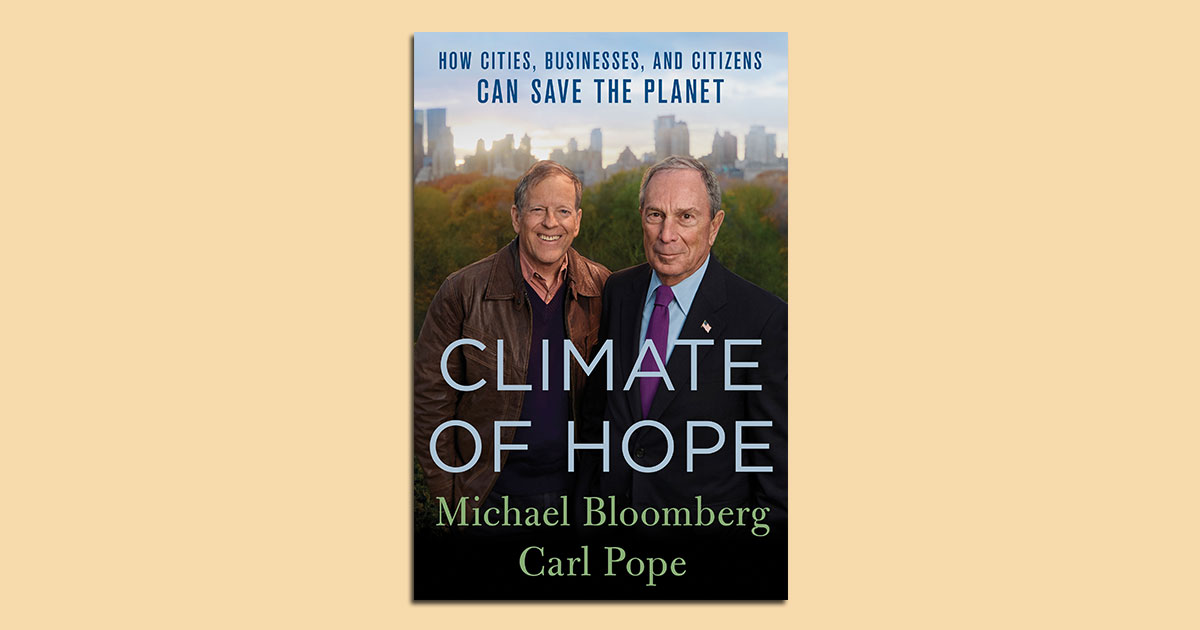
What happens if we do bust the 1,000-gigaton carbon budget? We can still bring concentrations of those gases back down to a level that sustains a stable climate. We won’t get back quite the climate of the last 500 years, but we can shoot for one that future generations can adjust to. We have some time — remember, climate steers slowly and sluggishly, like a ship or plane, not all at once. If we go over our emissions budget briefly but promptly start reducing concentrations, we can eventually heal the climate, even though repair will take decades to be felt.
Here as elsewhere, the key to unlocking the climate puzzle is to realize that if we handle other pieces of our business better — in this case, stewardship of vital food, timber, and water sources like wetlands, mangroves, forests, prairies, and peat bogs — we will simultaneously make major strides toward a safer climate and a cooler world. Investment in ecosystems is vital if we want them to thrive and then do what they are superbly equipped to do — suck carbon out of the atmosphere and turn it into soil and vegetation.
When scientists refer to this conversion of CO2 from a gas into organic matter as negative emissions, it sounds preposterous. But it’s actually not. After all, it took the intervention of an industrial civilization, wastefully extracting enormous quantities of fossil fuels, breeding billions of cattle, and using large volumes of disruptive chemicals like HFCs, to disrupt the climate in the first place. Prior to this disruption, atmospheric concentrations of CO2 periodically went down, as oceans, forests, and soils sucked more CO2 out of the air than volcanoes and fires put back in. Global CO2 levels in 1750 were lower than they had been in 1500. Only with the Industrial Revolution did they begin their steady climb. Cooling, as well as warming, is in the Earth’s tool kit.
Here’s how it works. Natural processes scrub black carbon and methane out of the atmosphere fast — in twenty years, both they and their warming impact on the climate are gone. HFCs and nitrous oxide hang around for a long time—but if we implement the global agreement phasing out HFCs and also phase out excessive fertilizer use, they won’t take us close to the 1.5-degree redline.
That leaves CO2. It can last for a thousand years, but only if it remains in the atmosphere, and most of it doesn’t. Right now, only 1 percent of stored carbon is in the atmosphere; 30 percent is in soil and vegetation; 13 percent is stored in reserves of coal, oil, and natural gas; and a whopping 56 percent is in the ocean. So once we phase out HFCs and minimize methane, black carbon, and nitrous oxide emissions, our task is to store more and more of the world’s carbon not in the sky (where it disrupts climate) and not in oceans (which it causes to become acidified and damaged) but in soils and vegetation, where that CO2 is the key to beneficial results, including higher crop yields and more effective water storage. More carbon in the sky is a threat. Carbon in soils and forests is an asset.
We have phenomenal machines to do this job — they are called plants, and they exist to take CO2 out of the atmosphere and turn it into organic matter in the soil. (Certain kinds of rocks also sequester CO2 in very large quantities, but our ability to influence the pace of such mineralization is much more limited than our impact on the biosphere and plant life.) What does it take to trip the biosphere — the globe’s collection of animals and plants — into a massive carbon-storing mechanism?
We simply have to protect valuable natural ecosystems like peat bogs and mangroves, start planting and growing more trees than we cut, adopt farming practices that treat soil as a primary asset rather than stripping it of nutrients and carbon, and allow grasslands to be grazed in ways that enhance, rather than destroy, their productivity. Healthier agriculture and forestry, in all their forms, are the keys to reducing atmospheric concentrations of CO2.
There are other strategies. A fair amount of scientific research is pursuing engineering strategies to “capture” CO2 even once it is released in the atmosphere. Exxon-Mobil is a partner in a major fuel cell project, which combines CO2 from flue gases with natural gas to create electricity. Whether these pilots can, in a near future, be scaled at an affordable level is uncertain, but it seems only prudent to support the needed research to explore them.
One thing is certain: The use of plants to reduce climate risk is ready and able to go — today.
From Climate of Hope by Michael Bloomberg and Carl Pope. Copyright © 2017 by the authors and reprinted with permission of St. Martin’s Press, LLC.
More Must-Reads from TIME
- Donald Trump Is TIME's 2024 Person of the Year
- Why We Chose Trump as Person of the Year
- Is Intermittent Fasting Good or Bad for You?
- The 100 Must-Read Books of 2024
- The 20 Best Christmas TV Episodes
- Column: If Optimism Feels Ridiculous Now, Try Hope
- The Future of Climate Action Is Trade Policy
- Merle Bombardieri Is Helping People Make the Baby Decision
Contact us at letters@time.com